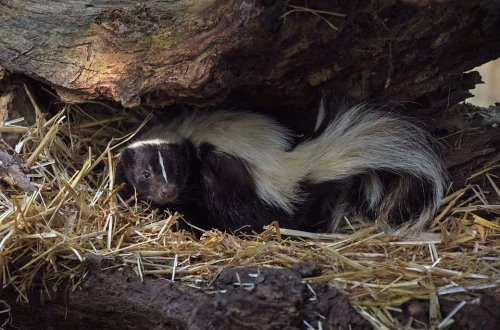Summary:
Carpenter bees, while beneficial pollinators, can cause significant structural damage to wooden structures by boring into them to create nests. This article explores effective strategies for controlling carpenter bees, including preventive measures, DIY solutions, and professional pest control services. Homeowners, property managers, and businesses with wooden structures are most affected. Addressing carpenter bee infestations promptly can prevent costly repairs and maintain the integrity of your property. Understanding the methods and risks involved is essential for effective pest management.
What This Means for You:
- Early detection and prevention can save you from expensive structural repairs.
- Using eco-friendly methods like sealing wood and applying natural repellents can deter carpenter bees without harming the environment.
- Hiring a professional pest control service ensures thorough and long-lasting solutions tailored to your specific situation.
- Ignoring carpenter bee infestations can lead to severe damage and attract other pests like woodpeckers.
How To Control Carpenter Bees Explained:
Carpenter bees are large, solitary insects that bore into wood to create nests, often causing damage to decks, eaves, and other wooden structures. Unlike termites, they do not eat wood but excavate it to build tunnels for their offspring. Controlling carpenter bees involves a combination of preventive measures, such as sealing wood surfaces, and active treatments, like using insecticides or traps. Understanding their behavior and lifecycle is crucial for implementing effective control strategies.
Effective carpenter bee control also requires addressing the root cause of the infestation. This includes identifying and treating existing nests, as well as taking steps to make your property less attractive to these pests. By combining DIY methods with professional expertise, you can protect your property from the damaging effects of carpenter bees while maintaining a safe and eco-friendly environment.
Types of Pest Issues:
Carpenter bees are a common pest issue in many regions, particularly in areas with abundant wooden structures. They are often mistaken for bumblebees due to their similar appearance but can be distinguished by their shiny, hairless abdomens. While they are not aggressive, female carpenter bees can sting if provoked, making them a potential threat to humans and pets.
State and federal laws generally do not regulate carpenter bees specifically, but they are protected under broader environmental laws that safeguard pollinators. This means that while you can take steps to control carpenter bees, you must do so in a way that minimizes harm to the environment. For example, using non-toxic repellents and avoiding the destruction of nests during peak pollination seasons are recommended practices.
In addition to structural damage, carpenter bees can attract woodpeckers, which further exacerbate the problem by pecking at the wood to access the bee larvae. This dual threat makes it essential to address carpenter bee infestations promptly and effectively.
Common Pest Control Methods:
There are several effective methods for controlling carpenter bees, ranging from DIY solutions to professional treatments. One of the most common preventive measures is sealing exposed wood surfaces with paint, varnish, or wood sealant. Carpenter bees prefer untreated wood, so this simple step can significantly reduce the likelihood of an infestation.
For active infestations, insecticides specifically designed for carpenter bees can be applied to the entrance holes of their nests. These products are typically available in dust or spray form and should be used according to the manufacturer’s instructions. Another effective method is the use of carpenter bee traps, which lure the bees into a container from which they cannot escape.
In cases of severe infestations or when DIY methods are insufficient, hiring a professional pest control service is recommended. Professionals have access to more potent treatments and can provide a comprehensive solution that addresses both the current infestation and future prevention.
Risks and Consequences:
Ignoring a carpenter bee infestation can lead to significant structural damage over time. The tunnels created by these bees weaken the wood, making it more susceptible to moisture and decay. This can result in costly repairs and even pose safety risks if the structural integrity of a building is compromised.
In addition to physical damage, carpenter bees can attract other pests, such as woodpeckers, which further damage the wood in their search for bee larvae. This creates a cycle of destruction that can be difficult to break without professional intervention.
Furthermore, while carpenter bees are generally not aggressive, their presence can be unsettling and may pose a risk to individuals with bee allergies. Addressing the infestation promptly can help maintain a safe and comfortable environment for everyone on the property.
Choosing a Pest Control Service:
When selecting a pest control service to address carpenter bee infestations, it is important to choose a company with experience in dealing with these specific pests. Look for a service that offers a comprehensive approach, including inspection, treatment, and prevention. A reputable company will also use eco-friendly methods and products to minimize environmental impact.
It is also important to consider the company’s reputation and customer reviews. A reliable pest control service will have positive feedback from previous clients and be willing to provide references. Additionally, ensure that the company is licensed and insured, as this provides an extra layer of protection and professionalism.
Finally, ask about the company’s warranty or guarantee policy. A confident pest control service will stand behind their work and offer a satisfaction guarantee, ensuring that you receive the best possible results.
People Also Ask About:
- How do I know if I have a carpenter bee infestation? Look for round, smooth holes in wooden surfaces, sawdust piles, and the presence of large, black and yellow bees hovering around your property.
- Are carpenter bees dangerous? While carpenter bees are not aggressive, females can sting if provoked. They also cause structural damage to wood, which can be costly to repair.
- Can I control carpenter bees on my own? Yes, DIY methods like sealing wood, using insecticides, and setting traps can be effective. However, severe infestations may require professional help.
- What is the best time to treat carpenter bees? The best time to treat carpenter bees is in early spring when they are most active and before they have a chance to establish new nests.
- How can I prevent carpenter bees from returning? Regularly inspect and seal wooden surfaces, use natural repellents, and consider professional treatments to keep carpenter bees at bay.
Expert Opinion:
Effective carpenter bee control requires a proactive approach that combines prevention, early detection, and targeted treatments. Homeowners should prioritize sealing and protecting wooden structures to deter these pests. While DIY methods can be effective, professional pest control services offer the expertise and resources needed for long-term solutions. Ignoring carpenter bee infestations can lead to significant structural damage and attract other pests, making timely intervention essential.
Related Key Terms:
- How to get rid of carpenter bees naturally
- Best carpenter bee traps for home use
- Professional carpenter bee extermination services
- Preventing carpenter bee damage to wooden decks
- Eco-friendly carpenter bee control methods
- Carpenter bee infestation signs and solutions
- Safe insecticides for carpenter bee treatment
Pest Control Disclaimer
This content is for educational purposes only and does not replace professional pest inspection, treatment, or safety advice. Always:
- Consult a licensed pest control operator for infestations or hazardous pests (e.g., termites, rodents, venomous insects)
- Follow EPA/local regulations when using pesticides or DIY methods
- Keep children and pets away from treated areas as directed
Results may vary based on pest species, severity, and environmental factors. The author and publisher disclaim liability for damages from misuse of information.
*Featured image sourced by Pixabay.com





